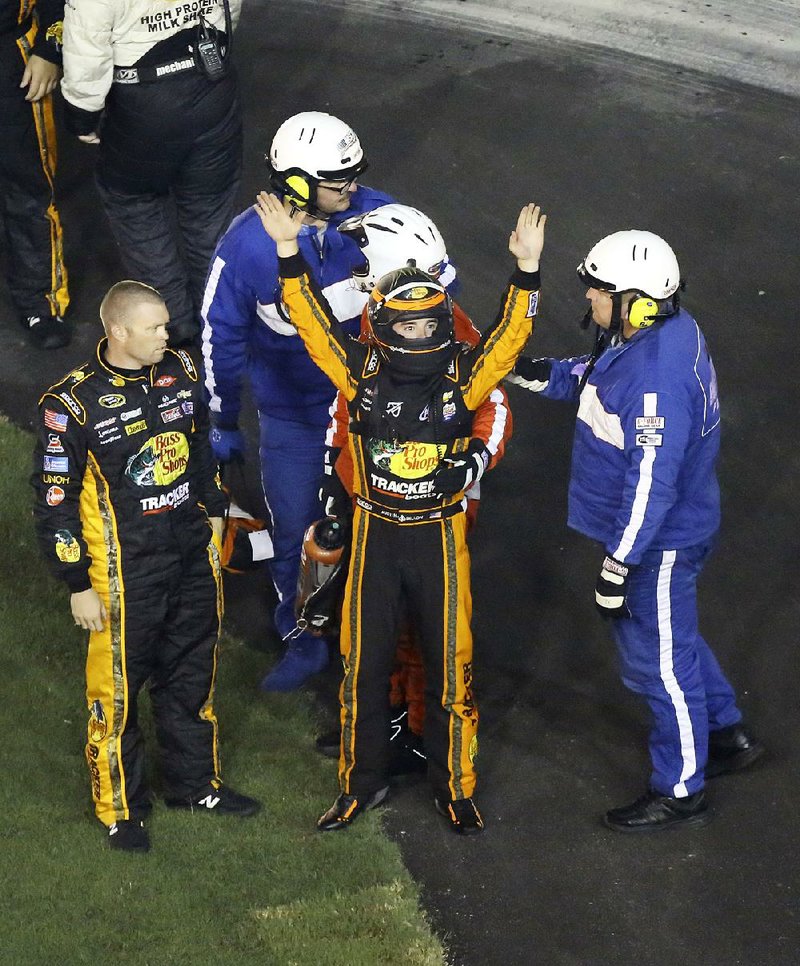Once the debris was cleared, the carnage assessed and the fires were put out just hours before the sun rose over Daytona International Speedway on Monday morning, the clarity in the chaos became obvious:
Someone is going to die again at a NASCAR restrictor plate race. A driver. A fan. Maybe both.
Austin Dillon was a fortunate son after his Chevy went flying in the night on the last lap of the Coke Zero 400 on Sunday night. His car was mangled, and shattered into pieces. He walked away intact despite taking a frightening shot from Brad Keselowski, as Dillon was bounced one final time from what was left of his protective cocoon.
Fans thought he was dead. So did drivers. As Dillon emerged from that split-second insanity and waved his arms to the fans, it signaled a brilliant stroke of luck and proactive safety elements for both the driver and the sport.
Give NASAR and Daytona Speedway International Speedway officials huge credit for securing both the car and the track (with an absorbent catch-fence that took on the full impact of a 3,500-pound stock car). But it comes down to one of those Russian Roulette deals. As a friend said, "A near miss is simply a near failure."
The wild wrecks at the restrictor plate tracks are Daytona and Talladega are a spinning, out-of-control, TV highlight reel of madness. Bad things will happen when you put a cluster of cars inches from each other in a competitive scrum at speeds approaching 200 mph. Somebody well above my pay grade needs to figure out how to reconcile everyone's visceral thrills with the ominous likelihood of another death in the highest level of stock-car racing.
It will no doubt rev up the conversation, as it did in 2001, when Dale Earnhardt died on the last lap of the Daytona 500.
Once you get past the eerie fact that Dillon also drives the No. 3 Chevy, as well for his grandfather Richard Childress, just like Earnhardt did for the man who was his best friend, you cut to the most pertinent question:
Is Russian Roulette, or this nation's version of bull-fighting, worth all those thrills at restrictor plate tracks?
Those quick to dismiss this as another example of the "wusstification of NASCAR" should listen to the drivers. I was there in the media infield center when race winner Dale Earnhardt Jr. and teammate Jimmie Johnson came into address the media sometime around 3 a.m. because of the prolonged rain-delay (another controversy but not nearly as important today).
They were shaken to the core, as were other drivers.
So if you think this is all part of what they sign up for, stick yourself in there. Think of your wife and family, and see if those are acceptable work conditions.
"That scared the hell out of me, I will be honest with you," Earnhardt Jr. said. "I saw the whole thing happen. ... That was terrifying to watch."
"I'm shocked that Austin Dillon is still alive," Johnson said. "I expected the worse."
"I can't believe this is my final race here, but after going through that experience I'm glad I only have one more restrictor plate race left," said Jeff Gordon, who was racing for the final time at Daytona.
"NASCAR got what they wanted. That's the end of it," Newman told USA Today Sports. "Cars getting airborne, unsafe drivers, same old stuff. They just don't listen."
Perhaps somebody should. Because at some point, the conversation is going to get much louder, contentious and tragic.
The wussification of NASCAR will be the least of anyone's worries.
Sports on 07/07/2015
